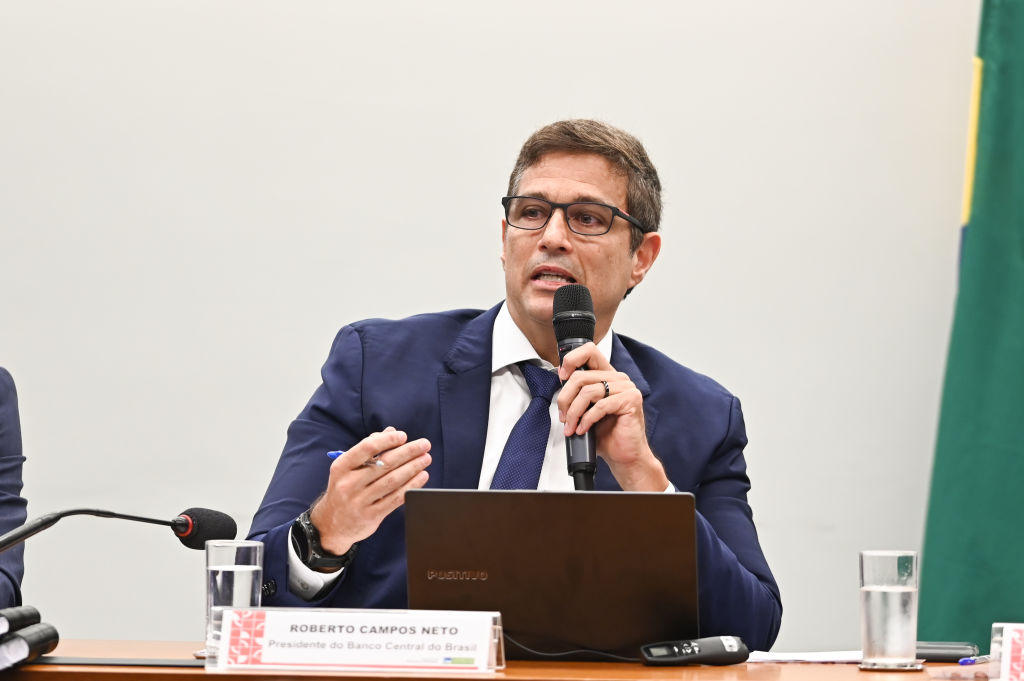BRIC by BRIC: Leaders Summit in Russia
BRIC by BRIC: Leaders Summit in Russia
The BRIC leaders meet June 16 for their first official summit amid optimism about their economies and growing importance on the world stage. Ahead of the meeting, Brazil, China, and Russia announced substantial financing of the International Monetary Fund.
The current global financial crisis may turn short-term economic goals into dreams deferred for many emerging markets. But there’s a sense of optimism about BRIC (Brazil, Russia, India, and China) economies as the country’s leaders take part in their first formal summit on June 16 in Yekaterinburg. When they gather in the Russian Urals, the heads of state will likely discuss reforms to the global financial system and weigh the possibility of creating a reserve currency. The summit could also serve to boost their standing on the world stage; in recent days, three BRIC members—Brazil, Russia, and China—demonstrated their interest in doing just that when they each declared intentions to make large investments in International Monetary Fund (IMF) bonds.
As the world finds itself battered by a global financial storm, the four giants see signs of hope, with their markets showing signs of year-to-date improvement. Brazil offers an example of the reason for confidence. The June 9 news that its economy officially entered into recession has been met with a sense of aplomb. As the AQ blog notes, the first-quarter contraction of 0.8 percent stands as a relative improvement over the 3.8 percent rate during the previous quarter. This week, its Central Bank cut interest rates to 9.25 percent—in the single digits for the first time since the 1960s. “Among the last to fall into recession, Brazil may be among the first to grow out of it,” according to this week’s edition of The Economist.
Now, along with two other BRIC members, Brazil announced intentions to shift reserves into multicurrency IMF bonds. China and Russia pledged $50 billion and $10 billion respectively. Brazil, which in the past sought IMF assistance, plans to invest $10 billion. A Bloomberg analysis looks at the trilateral move in the context of “rebalancing” power, saying: “For U.S. President Barack Obama and Federal Reserve Chairman Ben S. Bernanke, that’s a warning. For investors, it may be an opportunity.” Brazilian President Luiz Inácio Lula da Silva said this week: “The good news is that rich countries are in crisis and that emerging countries are making a huge contribution to save the economy and, consequently, save the rich countries.” Finance Minister Guide Mantega told reporters highlighted Brazil’s role as a creditor, saying its IMF investment would “aid developing countries with scarce credit.”
A Reuters analysis finds that, despite the growing sense of a BRIC community, divergent goals exist. China’s GDP outstrips that of the other three countries combined and, while Brazil and Russia signal interest in weakening dollar dependency, Beijing still supports the dollar as the dominant currency. Financial Times argues that "it is debatable whether the Brics have anything more in common than their size and economic potential." The article makes the case that, aside from the belief that Washington's say in the global economy should be lessened, the differences between the countries remain a barrier to any substantive agreements at the summit.
The BRIC concept has roots in a 2001, when Goldman Sachs economist Jim O’Neill penned a paper forecasting that by 2050, the four countries could stand among the world’s six biggest economies. The paper did not predict a formal alliance, but Russia hosted the first ministerial-level BRIC meeting last year.
Access Goldman Sachs materials about BRIC. The Jamestown Foundation evaluates Sino-Brazilian ties. Read AS/COA analysis of Lula’s May trip to China.







